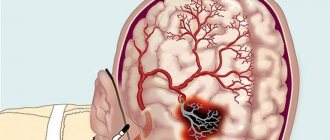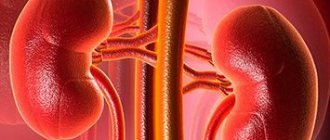Chlamydia trachomatis is a bacterium that is a type of obligate intracellular parasite. The size of the bacterium does not exceed 250-350 nm. It multiplies like viruses inside a cell, so the presence of chlamydia in the body can only be detected after it has damaged vital organs.
In the body of men, trachomatis is most often concentrated in the genitourinary system, which in some cases causes the development of urogenital chlamydia, decreased potency and infertility.
Chlamydia - symptoms
The severity of symptoms, the course of the disease and the consequences of chlamydia depend on the type of chlamydia, the intensity of infection and the person’s state of health. In many cases, chlamydia is asymptomatic.
The incubation period of chlamydia is from 7 to 21 days.
The first signs of chlamydia
- Weakness;
- Increased body temperature – up to 37-37.7 °C;
- Discomfort in the genital area.
Read also Pneumonia - causes, symptoms and treatment of pneumonia
The main symptoms of chlamydia in women
- Mucous, often with purulent contents, yellowish vaginal discharge with an unpleasant odor;
- Discomfort, itching, burning sensations in the genital area;
- Mild pain in the pelvic area, lower abdomen, usually intensifying before the onset of menstruation;
- Presence of bleeding between periods;
- Weakness;
- Increased body temperature – up to 37-37.7 °C.
The main symptoms of chlamydia in men
- Urethritis is an inflammatory lesion of the urethra (urethra) for 2-4 months;
- Mucus discharge from the urethra;
- Pain in the urethra, scrotum, testicles, lumbar region;
- Itching and burning sensations in the genital area, especially when urinating;
- Cloudy urine, sometimes streaked with pus and blood;
- Sometimes streaks of blood may be present during ejaculation;
- Weakness;
- Increased body temperature – up to 37-37.7 °C.
Symptoms of chlamydia in children
Clinical manifestations depend on the location of the child’s infection. In 90% of cases, the infection is transmitted from mother to child during childbirth.
The main symptoms of the disease in children are:
- If the respiratory system is affected - dry, and then wet cough, medium-bubble wheezing on auscultation, shortness of breath, attacks of vomiting, bluish skin;
- If the organs of vision are affected - redness of the eyes and further purulent discharge from them, enlargement of regional lymph nodes.
Diagnosis of chlamydia - what tests are needed?
Since the symptoms of the pathology are uncharacteristic, the condition is diagnosed accidentally during an examination by a gynecologist for another reason.
If a woman has potential signs of the disease, the patient is prescribed various tests. The leaders are:
- examination of a vaginal smear for the presence of bacteria;
- blood test for antibodies - characteristic antibodies indicating the development of the disease are determined;
- PCR test - will allow you to accurately identify chlamydia, since it allows you to determine the genetic material of the pathogen;
- bacterial culture - helps to diagnose the condition with a 70% probability, determine the type of pathogen, select antibacterial drugs to develop a treatment regimen;
- immunofluorescence – identifies the pathogen with a 50% probability.
The patient undergoes an ultrasound examination of the pelvic organs. The procedure helps identify hidden signs of the condition in the form of structural changes in the uterus, fallopian tubes and ovaries.
After suffering chlamydia, a person develops temporary, so-called “non-sterile immunity”, so re-infection cannot be ruled out.
Consequences of chlamydia
Among the complications of the disease are:
- Diseases of the genitourinary system - prostatitis, cystitis, urethritis, orchiepididymitis, epididymitis, pyelonephritis, adnexitis, colpitis, endocervicitis, endometritis, erectile dysfunction, impaired sperm formation, menstrual irregularities, infertility, cysts, cervical erosion, cervical or ovarian cancer, complicated course pregnancy, miscarriage, ectopic pregnancy;
- Other diseases are mastopathy, mastitis, lymphadenitis, arthritis, conjunctivitis, Reiter's syndrome.
Causes of chlamydia
The main cause of chlamydia is infection of the body with bacteria of the genus Chlamydia (lat. Chlamydia), mainly Chlamydia trachomatis, less often Chlamydophila pneumoniae, Chlamydophila psittaci and Chlamydophila pecorum.
Chlamydia in animals is most often caused by Chlamydia suis and Chlamydia muridarum. An additional factor that leads to increased activity of chlamydia in the body is a weakening of the immune system.
The causes of immunosuppression are stress, taking certain medications (antibiotics and others), alcoholism or drug addiction, poisoning, hypovitaminosis, hypothermia, the presence of other infectious diseases (acute respiratory infections, HIV infection and others).
How is chlamydia transmitted?
- Sexual route - during vaginal or anal intercourse;
- The vertical path is from mother to child during childbirth, when the baby passes through the birth canal;
- Airborne (through saliva, sneezing) – refers only to the bacteria Chlamydia pneumoniae, which causes the development of pneumonia;
- Household way - when sharing personal hygiene items and bedding. However, many doctors claim that this route of infection is unlikely, because This type of infection dies very quickly outside the body.
Complications of the disease
Chlamydia disease does not have typical symptoms. Infected people do not feel constant debilitating pain and do not consult a doctor.
Pain comes from a severely damaged organ, when it cannot cope with its work. Some diseases are difficult to treat only because of the high prevalence of chlamydia in the body.
The pathological process takes over the entire body.
Against the background of chronic chlamydia infection, complications develop:
- pneumonia;
- cystitis;
- prostatitis;
- decreased erectile dysfunction;
- infertility;
- diseases of the female and male genital areas;
- pyelonephritis.
A person will treat precisely these diseases, but the true cause - chlamydial infection - will not be identified and destroyed.
Types of chlamydia
Chlamydia is classified as follows:
With the flow:
- Acute chlamydia (duration up to 2 months);
- Chronic chlamydia (duration more than 2 months).
By localization:
- Urogenital - the clinical picture manifests itself mainly in the area of the genitourinary system;
- Ophthalmochlamydia - the clinical picture manifests itself mainly in the area of the visual organs;
- Respiratory - the clinical picture manifests itself mainly in the respiratory organs;
- Generalized - simultaneous chlamydia infection of several internal organs and various types of epithelium.
How does infection occur?
The most common route of infection is sexual contact (traditional, oral or anal). Less commonly, infection is possible through contact with dirty linen, towels, and other objects. It is possible to introduce an infection into the eyes with dirty hands, resulting in inflammation of the conjunctiva.
After contact with the mucous membrane, the pathogen invades the cells, where its transformation and reproduction occur. After some time, chlamydia colonies leave the cell and infect new ones. The cell dies. When a sufficiently large area of the mucous membrane is affected, clinical symptoms appear. This cycle (from the moment of infection to the appearance of symptoms) lasts from 1 to 3 weeks.
It is possible for bacteria to leave the cell without its death; in this case, asymptomatic carriage will be observed.
Diagnosis of chlamydia
Diagnosis of chlamydia includes:
- Examination of scraping cells from the affected area for the presence of chlamydia using polymerase chain reaction (PCR);
- Enzyme-linked immunosorbent assay (ELISA) of scrapings and blood to determine the level of IgA, IgM and IgG;
- General and biochemical blood test;
- Immunofluorescence reaction (RIF)
- Microscopic analysis of a smear from the urethra (in men) and vagina, urethra, cervix (in women);
- Determination of chlamydia resistance to antibiotics;
- If necessary, ultrasound.
Read also Neuritis - symptoms, causes, types and treatment of neuritis
Most mini-tests for the presence of chlamydia have low diagnostic accuracy - up to 20%.
How to quickly cure - an effective scheme for getting rid of chlamydia trachomatis
To eliminate chlamydia, a course of a suitable antibiotic is prescribed to both sexual partners, where an important condition is protected sexual intercourse for the period until complete cure.
In parallel, to suppress the concomitant anaerobic infection, an antimicrobial agent is taken, most often based on metronidazole or other nitroimidazoles with confirmed resistance to the first substance.
To treat chlamydia, antibiotics of the macrolide and tetracycline group are used, since they have the maximum ability to infect intracellular microorganisms and any form of protozoa - both in their active state and in the latent phase.
| Group | Tetracyclines | Macrolides |
| Advantages | Preferred in case of combined infection - the presence of not only chlamydia, but also mycoplasmas, streptococci, ureaplasmas and other pathogenic bacteria | Side effects are less pronounced; more convenient treatment regimen; Possibility of use during pregnancy |
| Flaws | They have a wide range of side effects; course of therapy up to 14 days | May not be effective in case of co-infection |
| Names of commonly used drugs | Doxycycline, Unidox | Azithromycin, Azithromed, Vilprafen, Sumamed |
The decisive factor in choosing an antibiotic is not so much its properties as the individual sensitivity of a particular patient’s chlamydia to the active substance.
How to treat chlamydia trachomatis in women and what drugs are used to treat chlamydia? Watch the video on this topic:
Chlamydia - treatment
How to treat chlamydia? Remember that the treatment regimen and dosage of drugs depend entirely on the type of chlamydia, the organs and tissues involved in the disease, the presence of complications and the patient’s health status.
That is why most doctors do not recommend self-medication, otherwise there is a high risk of acute chlamydia turning into a chronic form, which, as the immune system weakens, will periodically manifest itself and attack the human body. However, the general treatment regimen for chlamydia includes:
1. Antimicrobial therapy; 2. Stimulating the activity of the immune system; 3. Restoration of microflora; 4. Additional methods and means of treatment; 5. Diet.
Important! Two sexual partners must undergo the course of treatment, otherwise there is a high risk of re-infection of the body.
Antimicrobial therapy
Antimicrobial therapy, i.e. Treatment aimed at suppressing chlamydial infection includes the use of antibacterial, antiviral and antifungal drugs.
The main antibiotics for chlamydia are tetracyclines (Tetracycline, Doxycycline), macrolides (Azithromycin, Josamycin, Clarithromycin) and fluoroquinolones (Lomefloxacin, Ofloxacin, Moxifloxacin, Levofloxacin).
To suppress viral activity, as well as prevent the replication of chlamydia in the body's cells, interferons and other immunomodulatory drugs are used, which will be discussed later.
To prevent the addition of a fungal infection, in particular fungi of the genus Candida (candida), which cause thrush, antifungal (antimycotic) drugs are prescribed - Fluconazole.
Immunomodulatory therapy
A strong, strong immune system not only helps in the fight against infection, but also keeps it in check.
Immunomodulatory drugs usually include the following substances:
- alpha-2-interferon - activates immune cells, eliminates inflammatory processes, disrupts the division processes in the cells of the body of infectious microorganisms (viruses, bacteria, fungi and others), normalizes the processes of production of immunoglobulin A (IgA) by the immune system;
- anesthesin – weakens and relieves pain syndromes, burning sensation, itching;
- taurine – enhances the effect of interferon, restores damaged cells and tissues, has an antioxidant effect;
Popular immunomodulators are Amiksin, Genferon, Viferon, Timalin, Kagocel.
Vitamins - C (ascorbic acid), E (tocopherol), glutamic acid and various vitamin-mineral complexes will help not only strengthen the immune system, but also adequately respond to the body when an infection occurs.
Restoration of microflora
Taking antibacterial drugs leads to the appearance of dysbiosis in the intestines and vagina. In addition, dysbiosis in the female urinary system causes infection of its organs with various infectious microorganisms - chlamydia, gonococci, candida, etc.
Dysbacteriosis (dysbiosis), in turn, disrupts the normal functioning of these organs and makes them vulnerable to other unfavorable factors. For example, intestinal dysbiosis disrupts the normal absorption and processing of food, as well as the body’s conversion of useful substances from food. In turn, vaginal dysbiosis leads to inflammation of its walls, discomfort in this area and the appearance of various discharges.
To restore normal microflora in the intestines and vagina, prebiotics and probiotics are used, which consist mainly of bifidobacteria, lactobacilli and other cultures.
The most popular probiotics are Linex, Bifikol, Laktovit Forte, Bifidumbacterin.
Read also Coronary heart disease (CHD) - symptoms, causes, types and treatment of CHD
The most popular prebiotics are Duphalac, Hilak-Forte, Normaza.
4. Additional methods and means of treatment
To remove dead bacteria from the body that cause symptoms of intoxication - Atoxil, Polysorb, Enterosgel.
To support the liver, hepatoprotectors are used - “Legalon”, “Heptral”, “Essentiale”, “Phosphogliv”, “Karsil”.
Local treatment of inflammatory areas with antiseptic agents - “Miramistin”.
To strengthen the immune system, take additional vitamin and mineral complexes.
To relieve inflammatory processes, non-steroidal anti-inflammatory drugs (NSAIDs) are used - Paracetamol, Ibuprofen, Nimesil.
In case of severe inflammatory processes, hormonal drugs - Prednisolone, Hydrocortisone - can be prescribed.
Treatment of concomitant diseases.
During the treatment period, it is necessary to abstain from sexual intercourse.
Important! After the course of treatment and after 2-3 months, the body is re-examined for the presence of chlamydia to prevent chronic chlamydia.
Diet for chlamydia
Nutrition for chlamydia completely excludes from the diet the consumption of alcoholic and dairy products, fatty, spicy, smoked and fried foods.
Consequences of chlamydial infection for men
In addition to pain in the affected organs and tissues, there are also long-term consequences:
- Chlamydial infection is the cause of male infertility in 30%.
- With a long course of the disease without proper treatment, the formation of chronic pelvic pain syndrome is possible.
- Chlamydia can cause erectile dysfunction (if the infection spreads to the prostate).
Chlamydial infection is very “insidious”, since in most cases it is practically asymptomatic or “masked” in the form of banal cystitis and urethritis. However, the consequences of this disease can be extremely serious.
Lack of timely treatment for chlamydia can cause irreversible changes in reproductive function (infertility development). For this reason, it is necessary to follow the principles of “protected” sexual intercourse, and if alarming symptoms occur, be sure to consult a doctor to prescribe competent and effective treatment.
Useful articles on the topic: Spermogram: preparation for the test and interpretation of the analysis Trichomoniasis in men Acute and chronic urethritis in men
This article has been verified by a current qualified physician, Inna Zhikhoreva, and can be considered a reliable source of information for site users.
Rate how helpful this article was
4.5 60 people voted, average rating 4.5
Did you like the article? Save it to your wall so you don’t lose it!
Treatment of chlamydia at home
It is recommended to take folk remedies only in combination with traditional treatment regimens for chlamydia, and also after consultation with a doctor.
Parsley. 2 tbsp. spoons of chopped stems of flowering parsley pour 1 liter of boiling water, put the product on low heat and boil for another 5 minutes, then set the product aside for 30 minutes to infuse and cool, strain it. You need to drink the decoction during the day, in 4-5 approaches, for a course of 10 days.
Elsholtzia. This plant has a bactericidal effect, and the high concentration of acids and oils will help in the fight against chlamydia. To prepare the product, you need to pour 1 dessert spoon of Elsholtsia herb powder with a glass of boiling water, set the product aside for 30 minutes to infuse, and strain. You need to drink 1 tbsp. spoon 4 times a day, 30 minutes before meals.
Karagana. 1 tbsp. Pour a glass of boiling water over a spoonful of Caragana mane herb, let the product brew for 45 minutes, strain and use as a douche. This remedy will help reduce the severity of the symptoms of the disease.
Borovaya uterus. Pour 100 g of boron uterus raw material with 500 ml of vodka or cognac, close the lid and leave the product in a dark place for 7 days, shaking the tincture periodically. You need to take the product 1 teaspoon 4-5 times a day, 15 minutes before meals.
Ginseng. Pour 30 g of ginseng root powder into 1 liter of vodka, leave the product for 1 month in a dark place to infuse, shaking the product periodically. Afterwards, strain the tincture and take 1 teaspoon 3 times a day, 20 minutes before meals. Ginseng root, like eleutherococcus and echinacea, help to significantly strengthen the immune system.
Juices. In combination, drinking freshly squeezed juices from blueberries, cranberries, black currants, and red beets will help enhance the beneficial effect of folk remedies and medications.
Chlamydia in pregnant women: increased danger
Both partners must be tested before conception. If infection occurs after conception, then treatment should be urgent and comprehensive.
If chlamydia is allowed to progress in the body, pregnancy can have dire, sometimes even fatal, consequences for both the woman and the fetus.
The bacterium settles in the mucous membrane of the cervical canal, in the cervix and is located in colonies, so a smear for chlamydia does not always show an accurate result - material must be collected by scraping.
Possible complications
Treatment of chlamydia in pregnant women is of primary importance due to potential complications:
- spontaneous miscarriage;
- premature discharge of amniotic fluid;
- premature birth.
Even if childbirth has taken place, the risk of fetal infection remains high and amounts to 75%. The bacteria spreads especially quickly in children's bodies.
In mild forms, it leads to pneumonia, obstruction of the respiratory tract, pharyngitis, otitis media and conjunctivitis. Complications are possible in the form of encephalopathy with convulsions and Fitz-Hugh–Curtis syndrome (perihepatitis, ascites and acute peritonitis occur together).
In other cases, chlamydia, which a child becomes infected with through the placenta or during the passage of the birth canal, is fatal for him.
Treatment
It is recommended for the treatment of pregnant women to administer one of the following antibacterial drugs orally: Josamycin 500 mg 3 times a day for 10 days or Azithromycin 1.0 g once. Treatment of pregnant women with chlamydial infection is carried out at any stage of pregnancy with antibacterial drugs, taking into account their effect on the fetus, with the participation of obstetricians and gynecologists.
The drugs of choice are “Doxycycline” 100 mg 2 times a day for 10 days or “Josamycin” 500 mg 3 times a day for 10 days.
Prevention of chlamydia
Prevention of chlamydia includes:
- Refusal of promiscuous sex life, and, of course, casual sex;
- Use of personal protective equipment during sexual intercourse (condoms);
- Compliance with personal hygiene rules;
- Preventive periodic examination by a gynecologist (women) and urologist (men);
- Strengthening the immune system - toughen up, move more;
- Avoiding stress;
- In your diet, give preference to foods enriched with vitamins and microelements.
Causes and risk factors
Any person who is sexually active is at risk of contracting chlamydia (and women are more susceptible to infection).
The most common risk factors are:
- unprotected sex;
- improper use of a condom;
- multiple sexual partners;
- the presence of a partner who is in a high-risk group (people who have sex without a condom or have sex with carriers of the infection).
Old age is not insurance against chlamydia infection. Therefore, the practice of protected sex is relevant not only for young people, but also for older people.











